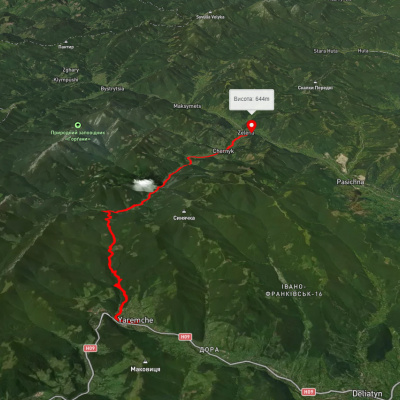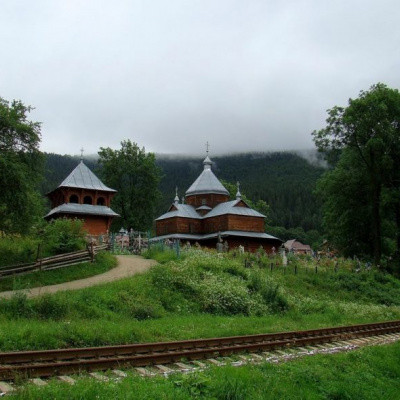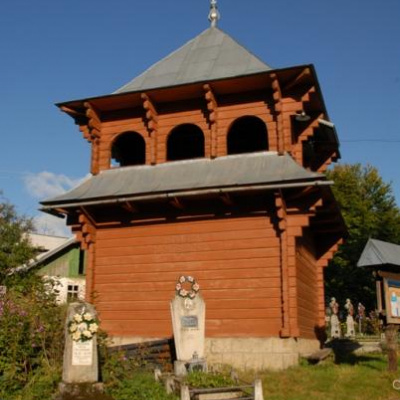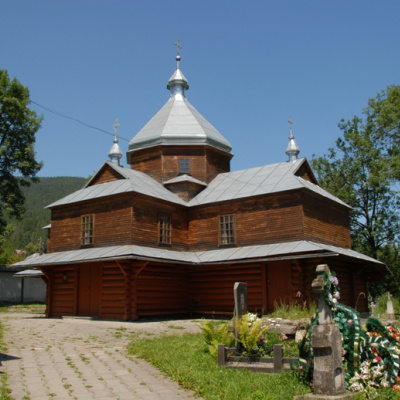Church of the Assumption of the Blessed Virgin Mary, Yaremche
The city of Yaremche was first mentioned in written records in 1787. According to one of the legends, the name of the city comes from the name of the first settler, Hutsul Yarema Godovanets. With the development of the railroad, the city began to grow. Yaremche flourished in the late 19th century, when wealthy people from big cities began to come to rest.
The lowland resort is located in a beautiful place in Ukraine on the banks of the Prut River. Every year, tourists come to Yaremche to enjoy the beauty of the scenery, breathe in the clean mountain air, undergo treatment in one of the local sanatoriums, or explore the numerous churches and chapels.
It's best to start exploring religious buildings from the Assumption Church, located in the city center. There is also a railway crossing near the church. The Church of the Assumption of the Blessed Virgin Mary was built in 1884 of wood and has survived to this day in almost its original form. Only the roof and domes have undergone some changes.
TheChurch of the Assumption of the Blessed Virgin Mary in Yaremche was built in 1911 in the style of Hutsul architecture and is located on a wide hill, its silhouette clearly visible against the background of the surrounding mountains. Some researchers also date the church to 1904. It is located next to the railroad, half a kilometer north of the train station and the central part of the city. This church is the newest of the three existing historical shrines in the village. (Until recently, there were 4 of them, but the Church of St. Elijah in the village of Dora, built in 1937, unfortunately burned down).
The wooden church of the Assumption of the Blessed Virgin Mary is a one-story, cruciform church, which is typical for many churches in the Hutsul region. According to historical data, this sacred building was constructed by craftsmen from Kosmach through the efforts of the priest of the village of Dora; the material for the construction of the church was brought by local residents on carts from the public forest. The temple is medium-sized, about 18x18 meters in plan, with all four parts covered with identical gable roofs, sloping at the ends. There is also a small dome with a cross on each side of the temple; all of these crosses, as well as the main one, seem to be authentic. In the center is an octagonal drum, on which the octagonal pyramidal dome of the temple is set. The dome is also crowned with a lantern and a cross on top. The lower part of the temple is an open log house made of one-sided hewn logs, painted with red paint on the outside. The second tier of the building is covered with wooden clapboard. The perimeter is covered with galvanized iron, just like the roofs and the dome. The doors are wooden, with a simple pattern of slats, rather large rectangular windows are in the second tier, and somewhat smaller windows are on the drum.
The iconostasis of the church is probably older than the church itself, dating from the second half of the nineteenth and early twentieth centuries. This iconostasis is characterized by a richness of decor, bright polychrome, patterns of large and small diamonds, as well as motifs of floral ornamentation. The interior of the sacred building also preserves the throne, which was made in 1914. The church is decorated with carvings by the outstanding master of folk art I. Brusturniak. Under Soviet rule, regular services were not held here, although the church was sometimes used for memorial services. However, even in Soviet times, religious life did not stop; the church operated underground, with priests celebrating liturgies in private homes, and monks from the aforementioned monastery in Dora, which was liquidated by the then government, lived in one of the estates for many years.
In 1938, a small two-tiered bell tower was built next to the church, which emphasizes the clear contours of the church with its simplicity. The building is made of hewn timbers, the lower tier is deaf, and above, above a narrow ledge, is a low second tier with large arched windows. The roof of the bell tower is hipped, with a similar covering to that of the church. The complex also includes a wooden gate that harmoniously fits into the overall appearance. The shrine is surrounded by a cemetery, but there is a fairly wide paved area directly around the church. There are no large trees around, so the church can be freely viewed from all sides.
Nowadays, the church has a Sunday school called "The Living Rosary" that pays great attention to the spiritual education of young people. To mark the centenary of the church's construction, the facade was restored and the yard was landscaped, as well as some other repairs.
The Church of the Assumption in Yaremche is a functioning church, belongs to the diocese of the UGCC, and is an architectural monument of Ukraine without official status. And although it is much "younger" than the local national heritage sites, the churches of St. John and St. Michael, it also deserves to be visited by tourists! Moreover, while vacationing in the city, you can include this object in short (or even long!) walking tours.
The Carpathians are waiting for travelers all year round, offering skiing or sightseeing. In Yaremche, you should spend time visiting the waterfalls and the huge national park, the Museum of Ethnography, as well as admire the Manyavsky Skete and the Church of St. John the Merciful. And in the evening you can taste real Hutsul cuisine in a restaurant built without a single nail.
Accommodation around Church of the Assumption of the Blessed Virgin Mary, Yaremche:
Які маршрути проходять повз Church of the Assumption of the Blessed Virgin Mary, Yaremche?
Пропонуємо пройти такі туристичні (пішохідні) маршрути через/біля Church of the Assumption of the Blessed Virgin Mary, Yaremche: с. Пасічна, через г. Синячка до м. Яремче, с. Дора, через г. Синячка, хр. Чорногориця до м. Яремче, м. Яремче, через хр. Явірник, вдсп. Женецький Гук, г. Хом'як, г. Синяк, г. Малий Горган, с. Поляниця до с. Татарів, с. Микуличин, через г. Костел, г. Рокита, г. Маковиця до м. Яремче, м. Яремче, через вдсп. Дівочі Сльози, пер. Пересліп до с. Зелена, с. Дора, через г. Синячка, пол. Чорногориця до м. Яремче
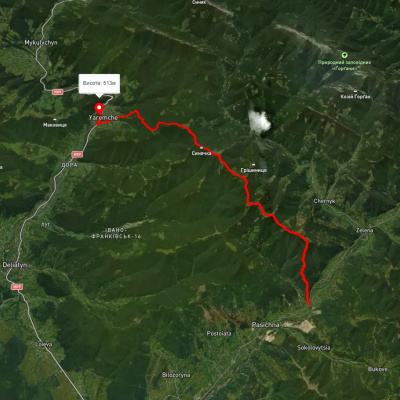
с. Пасічна, через г. Синячка до м. Яремче
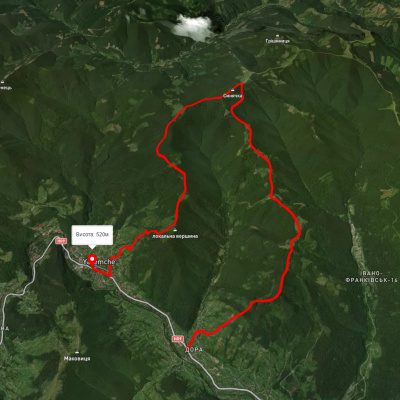
с. Дора, через г. Синячка, хр. Чорногориця до м. Яремче
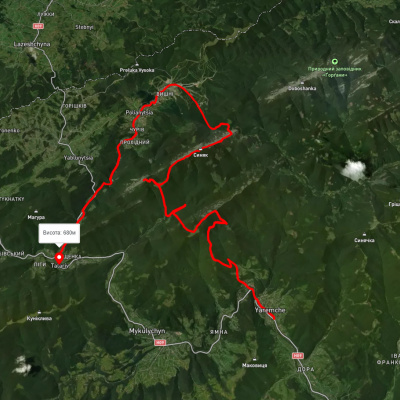
м. Яремче, через хр. Явірник, вдсп. Женецький Гук, г. Хом'як, г. Синяк, г. Малий Горган, с. Поляниця до с. Татарів
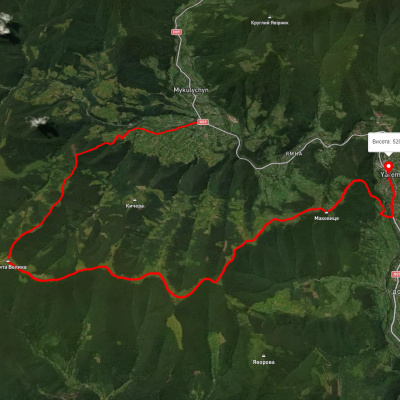
с. Микуличин, через г. Костел, г. Рокита, г. Маковиця до м. Яремче
